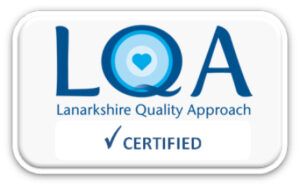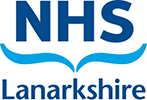Toe-walking
Information for patients
NHS Lanarkshire Neonatal Department
PIL.TOEWAL.21_00296.L
What is toe-walking?
Children who toe-walk will walk with their forefoot or the ball of their foot making contact with the ground first rather than their heel. Because of this it is sometimes called tip-toe walking.
Toe walking is common in children while they are learning to walk. However, children often grow out of it after the age of 3 and walk with a heel-to-toe walking pattern. Toe walking after the age of 3 may continue and is not unusual.
Toe-walking can affect
- Efficiency of walking
This can make activities such as going to the shops and engaging in sport or playing with friends more tiring.
- Balance
Because of the reduced area of contact the foot has with the ground, toe-walkers often find that it can make balancing more difficult. This can again affect sport and play.
- Injury
Because our bodies are not designed to walk like this, if not addressed it can lead to the possibility of injury in future.
What causes toe-walking?
The overwhelming majority of cases toe-walking will be habitual or what is known as “idiopathic”. This means that the toe-walking arises spontaneously and the direct cause of it is unknown. Most habitual toe-walkers grow out of it during early primary school and older children who continue to toe-walk may continue purely out of habit or because the muscles in their calves have grown tighter over time. Habitual toe-walking can sometimes run in the family.
When is physiotherapy treatment required for toe-walking?
Not all children who toe-walk require physiotherapy however it is worth observing your child and becoming familiar with any signs they show indicating you might have to get in touch with a medical professional. These include if your child:
- Shows any delay or regression in motor skills (movement skills).
- Cannot stand on the floor with flat feet.
- Has been complaining of pain or discomfort in relation to their toe walking.
- There have been any associated developmental milestone delays.
If any of the above signs are familiar, please contact NHS Lanarkshire Paediatric Physiotherapy on: 01698 368732.
Treatment exercises for toe-walkers
If your child’s toe walking is mild enough not to warrant a referral to physiotherapy that’s great! However, despite this there are still some quick and easy ways you can help your child’s toe walking from home.
- Encourage your child to try and achieve a “heel-strike” when walking rather than using their toes. This will help “break the habit” and will give them a stretch of their calves.
- Encourage your child to walk on their heels like a penguin. This is an effective and fun way for your child to strengthen the muscles by their shin and therefore counter their tight calves.
- Home stretches of the Achille’s Tendon and calf muscles are documented below. Note the handling, repetitions and time in order to perform an effective stretch.
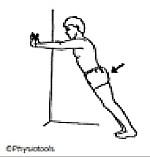
Stand facing wall with feet away from wall.
Place hands on wall. Lean forwards to feel a stretch in both calfs. Make sure both feet are facing forwards.
- Hold: 15-30 seconds
- Repeat 3 times
Tip: This can be done while your child is waiting for dinner.
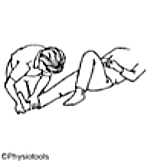
Stretching tendo-achillies.
Cup one hand around heel. Keep inside of forearm in contact with the sole of the foot. Gently draw the foot towards a right angle stabilising the leg with the other hand. Use gentle pressure. Do not use force.
- Hold: 15-30 seconds
- Stretch R foot 3 times; stretch L foot 3 times
Tip: This can be done while your child is waiting for bed or watching television.
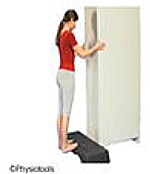
Stand on a step with both heels over the edge. Hold on to a support. You can just use the bottom step and hold on to the bannister.
Let the weight of your body stretch your heels towards the floor.
- Repeat 5 times
Tip: This can be done while your child is brushing their teeth.
- Stretching using yoga! This is a great way to stretch tight muscles as well as work on coordination and balance. In the following NHS Lanarkshire video Eileen will take you through a simple, easy and fun routine.
Doing these exercises may help to increase the amount of flexibility your child has at their ankle by increasing muscle length and reducing the symptoms of toe walking.
FAQ’s
Q Should I be concerned that my child toe-walks?
A No. Toe-walking can be very common and is not necessarily a cause for concern.
Q How long should I stretch for?
A It is recommended that you stretch for 30 seconds, 3 times for the most benefit.
Q Can my child still participate in sport and activities despite toe-walking?
A Yes absolutely. If it begins to stop them from doing anything or impeding them in any way get in touch with a health professional.
Q Is there anything I can do other than exercises that may help?
A Heavier footwear such as boots can be beneficial due to their weight in bringing your child’s heel down.
Contact details
- Douglas Street
Community Health Clinic
19 Douglas Street
Hamilton
ML3 0BP
01698 368732
- Hunter Health Centre
Andrew Street
East Kilbride
G74 1AD
01355 597466
- Coathill Hospital
Hospital Street
Coatbridge
ML5 4DN
01236 707743
- Kildrum Health Centre
Afton Road
Cumbernauld
G67 2ES
01236 794118

Pub. date: January 2021
Review date: January 2023
Issue No: 01
Reference: PIL.TOEWAL.21_00296.L
If you need this information in another language or format, please e-mail:
